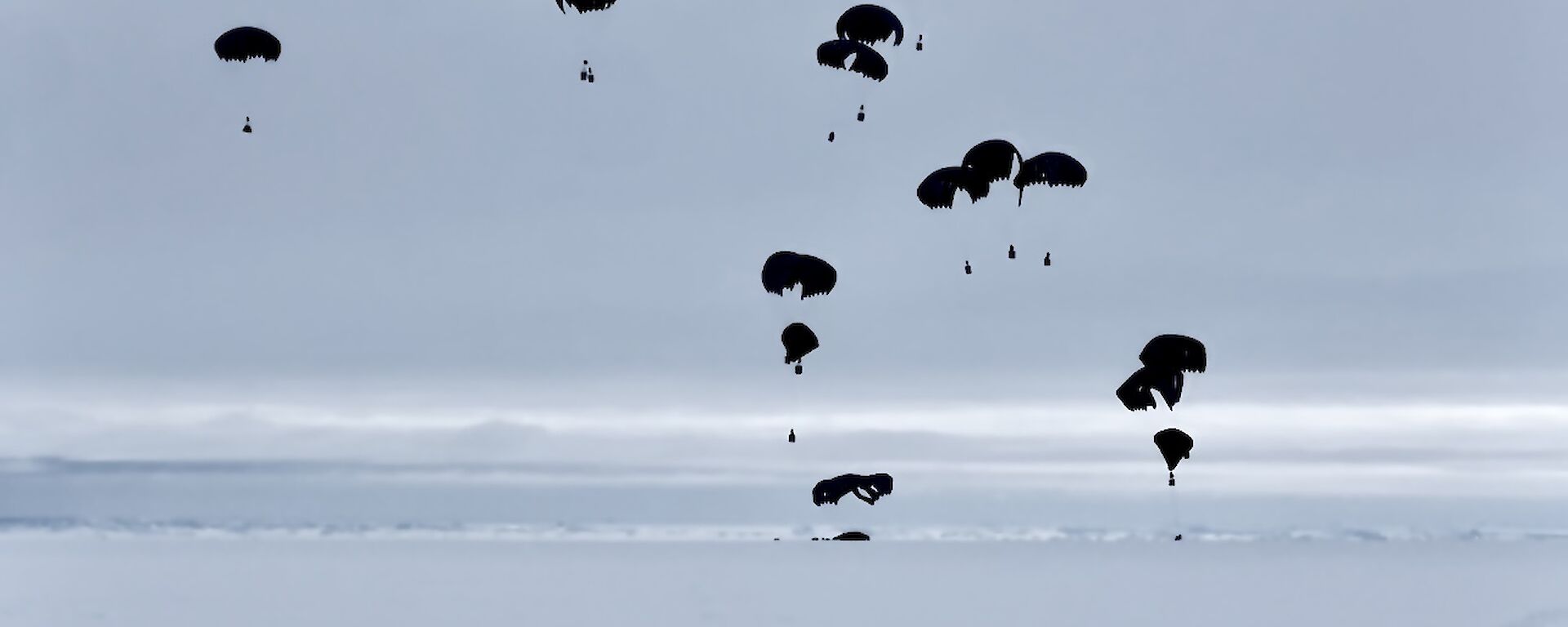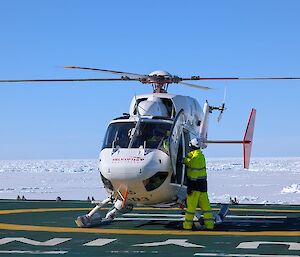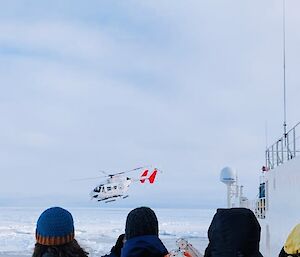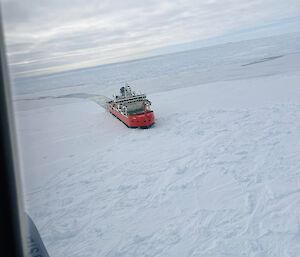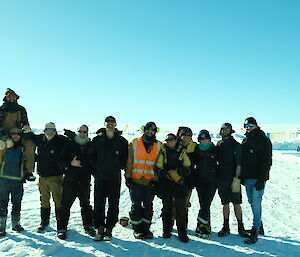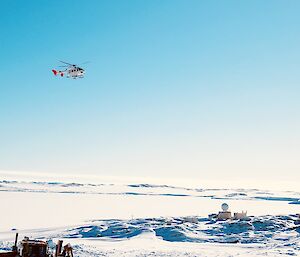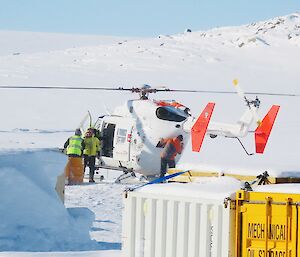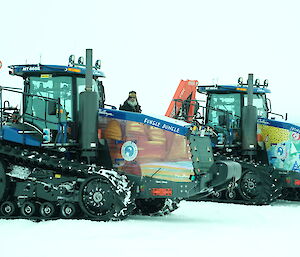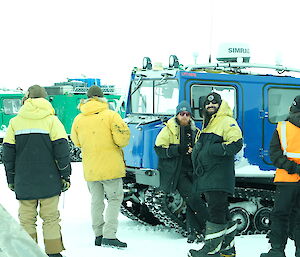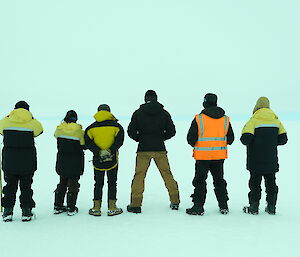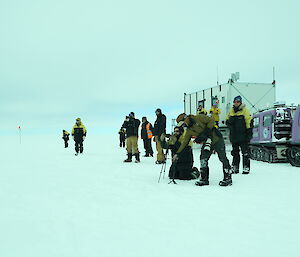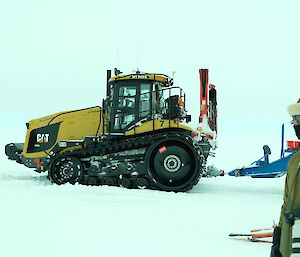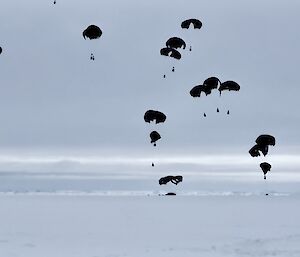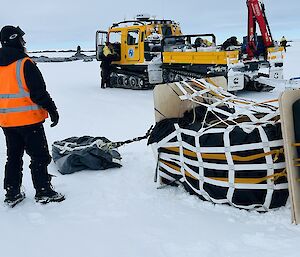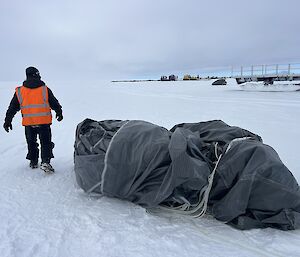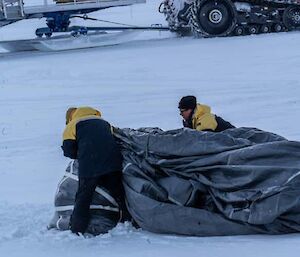It's been a week of air operations at Casey, with helicopters delivering people and supplies from RSV Nuyina and a C17 showering supplies from the sky.
The V1 fly-off
There was an air of anxious optimism as the ship approached within 100 nautical miles of station and we prepared for a day of aviation operations: seven helicopter flights bringing people and cargo. On this day, Mother Nature and the “A-factor” dealt us a winning hand — blue skies, light cloud, light winds, and a balmy –8°C on the ground.
Preparations had been underway well in advance: rooms made up with chocolates on the pillows (and the occasional towel art), the mess reconfigured to fit an extra 14 expeditioners, and station logistics aligned. The flights carried critical cargo — heavy equipment for the upcoming traverse, an incoming doctor and chef, the Million Year Ice Core traverse team, and additional aviation personnel to join the Wilkins team.
There is something surreal about watching an AAD-marked helicopter approach station on a perfect Antarctic day. As the first one came into view, conversation ceased, the portable speaker was switched off, and all that remained was the gradually rising thrum of rotor blades. The silence was a milestone in itself — a sign that winter was coming to an end and summer was knocking at our door. Helicopters disappeared into white clouds of their own downwash, re-emerging with people and supplies. Seven flights later, all were safely on the ground, just in time to gather in Splinters for the NRL Grand Final — footy on the big screen, a welcome drink, and bar snacks from Chef Nick.
The airdrop
Next up was an operation of scale: an airdrop containing thousands of kilograms of medical supplies, food, and equipment, delivered by 18 parachutes from an RAAF C-17 onto a wide-open Antarctic drop zone. Preparations had taken weeks — teams assigned to the Drop Zone and retrieval, backed by tractors, Hägglunds, sleds, and more than half the station. Meanwhile, others on station maintained fire response, search and rescue readiness, medical and catering services, weather observations, and on-call trades. It was a proper test of our resources, and everyone stepped up.
Weather observations began at 2am on station and at 5am at the Drop Zone. As the day unfolded, cloud and visibility slowly improved on a calm, near windless morning. Finally, the parachutes appeared, gracefully descending from the clouds. We couldn’t see the C-17 above, but as with the helicopters days before, silence fell across the team as everyone craned their necks skyward. One by one, the packages touched down in the stillness of Antarctica.
Retrieval began immediately: cargo hauled in, parachutes packed up, and every trace of the operation removed to leave the environment exactly as we found it. Back at station, there was something equally surreal about unloading boxes of medical supplies into the surgery and food into the traverse freezer, knowing those same boxes had been in Hobart only hours earlier. It was a reminder of the extraordinary planning and execution between the AAD in Kingston and the Australian Defence Force that made such a delivery possible.
Looking ahead
We are now 39 strong on station, with seven more up at Wilkins Aerodrome, and 10,000 kg richer in supplies. With these reinforcements, our focus shifts to supporting the traverse team as they depart for the Million Year Ice Core Project and preparing Wilkins Aerodrome for its first summer flights.
The sights and sounds — and the silences — of Antarctica are unforgettable. But beyond the postcard moments lies the real purpose: doing the job, together, in the coldest, windiest, and driest place on earth. That brings with it an immense sense of satisfaction no photograph could ever capture.

